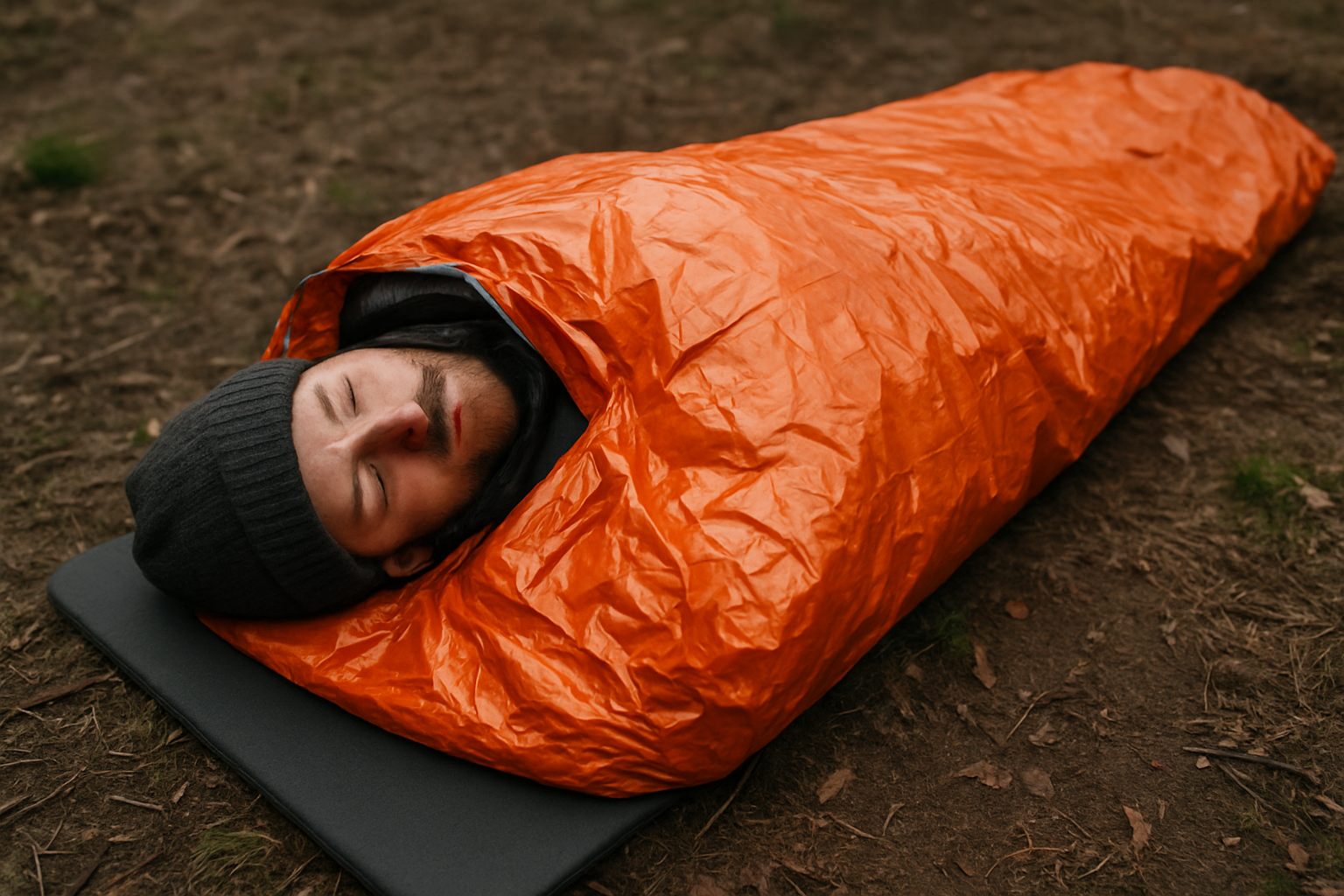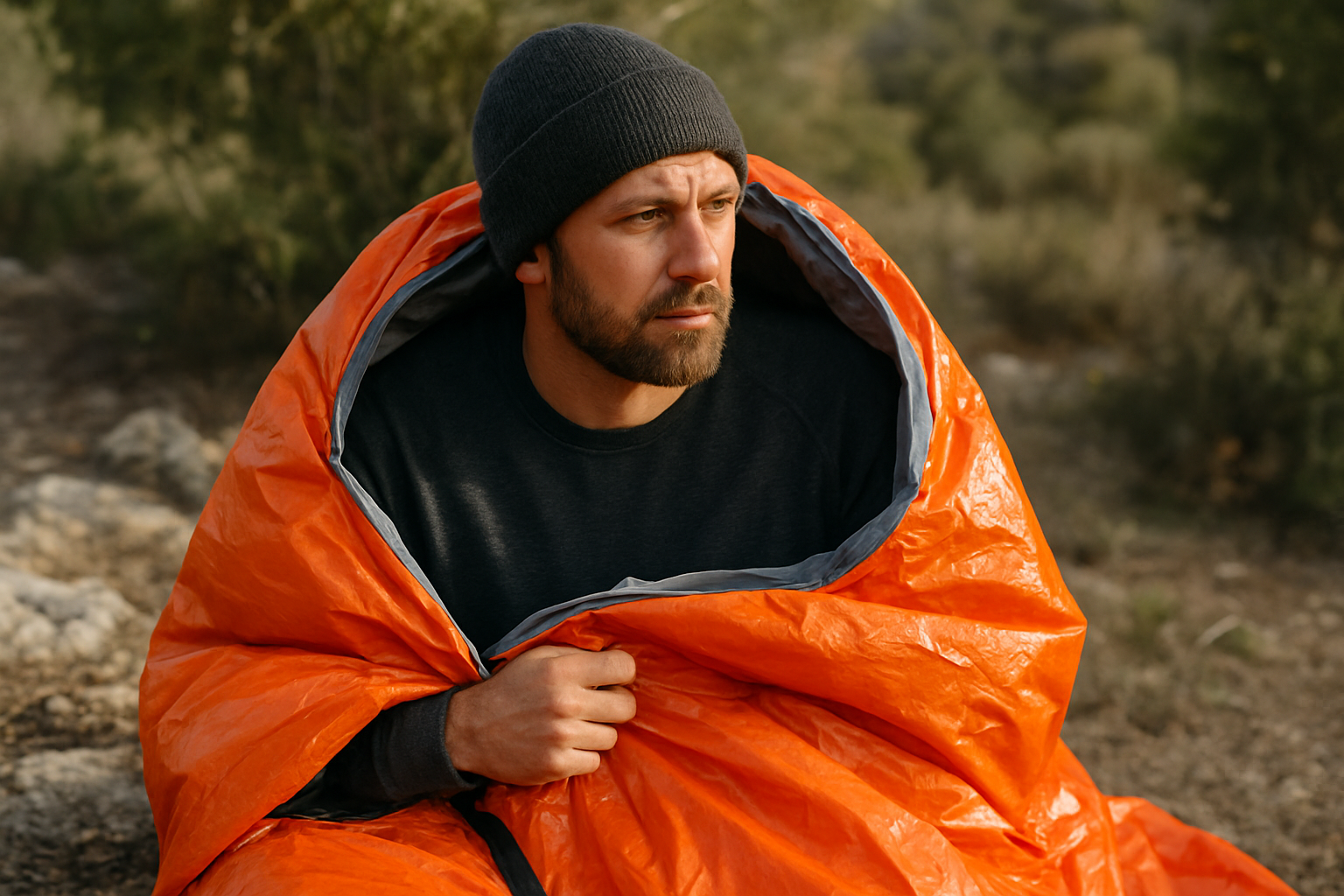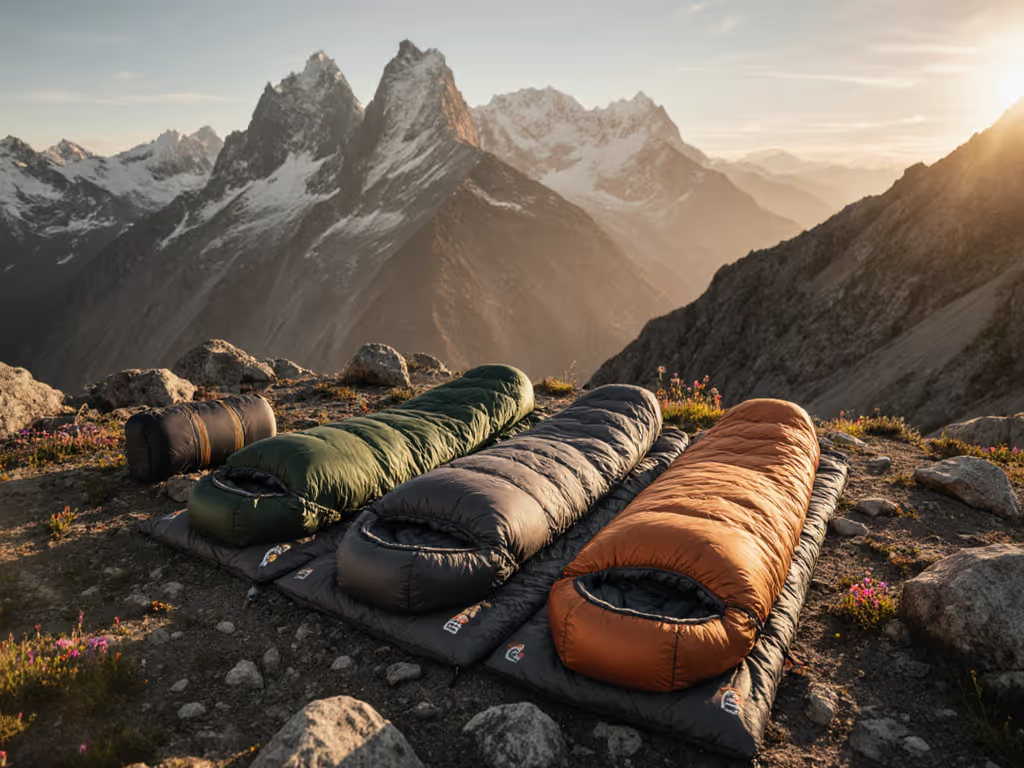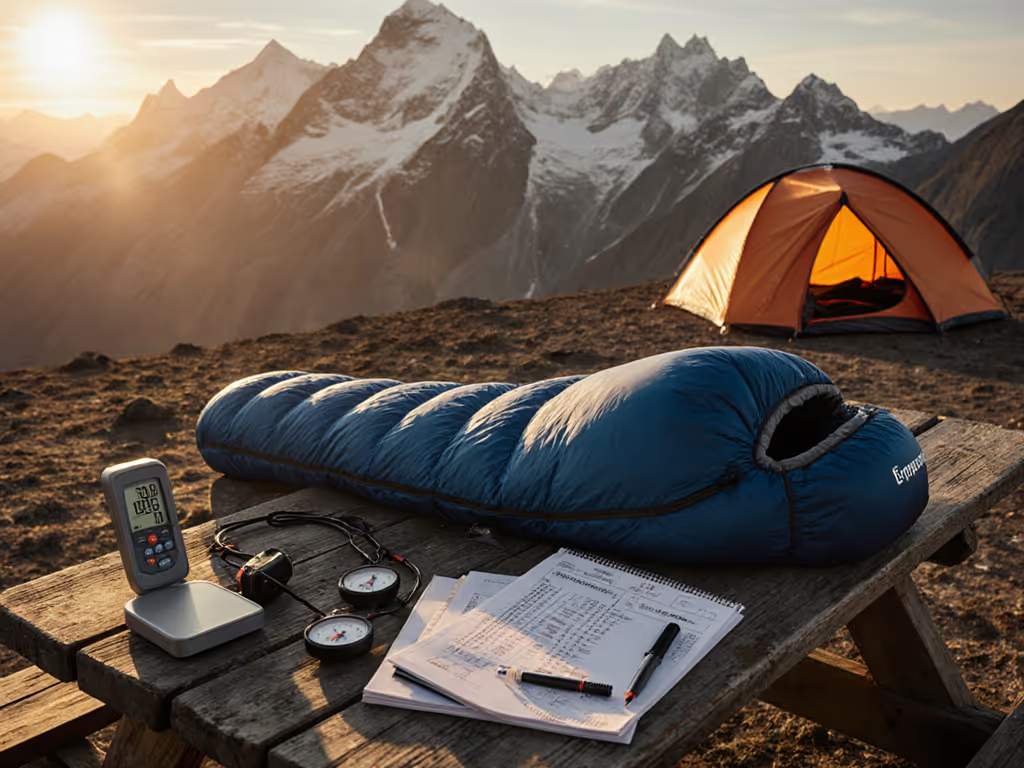
Patriot Wholesale Emergency Sleeping Bag Reviews: 7 Buyer Warnings Every Camper Should Know (Reviewed — Backpacker Sleep does not sell these products)

Patriot Wholesale Emergency Sleeping Bag Reviews (Reviewed - Backpacker Sleep does not sell, distribute, or warranty these products): 7 Buyer Warnings Every Camper Should Know
Looking for unbiased Patriot Wholesale emergency sleeping bag reviews you can actually use on a cold, windy night? You are in the right place. Note: Backpacker Sleep reviews these products but does not sell, distribute, or warranty Patriot Wholesale items; we provide independent, expert reviews and guides only. In this Q and A article, we break down what emergency bivy-style bags can and cannot do, how to verify claims using ISO [International Organization for Standardization] 23537 concepts, and where buyers often get tripped up by marketing. Along the way, Backpacker Sleep translates lab numbers into real warmth, explains insulation tradeoffs, and provides practical guidance in published content so your kit stays light yet reliable when temperatures dip and moisture creeps in.
Q1. Why are “patriot wholesale emergency sleeping bag reviews” suddenly everywhere?
Interest spikes whenever people prepare for unpredictable weather, long-distance road trips, or disasters, and emergency sleeping bags look like low-cost insurance. These ultralight, reflective bivy sacks promise surprising warmth by reflecting body heat, but hype can blur the line between realistic expectations and sales copy. Public consumer forums show mixed experiences: some campers stay warm enough for short stops, while others feel clammy or cold due to condensation and thin materials. The surge in attention is a signal to look past slogans and ask: what are these bags for, what are they not for, and how do you verify quality before clicking buy?
Backpacker Sleep approaches this surge with data and context rather than drama. If you’re new to the basics, start with our sleeping bag insulation guide to understand how warmth really works. We map emergency bag capabilities to ISO [International Organization for Standardization] 23537-style thinking about comfort and lower-limit temperatures, even though most emergency products are not fully ISO-rated. In simple terms, think of an emergency bivy as a wind and splash shell that reduces convective and radiant heat loss but depends heavily on your clothing, sleeping pad R-value [thermal resistance value], and the humidity you produce through perspiration. When you understand those variables, the reviews start to make sense: positive outcomes usually happen when the bag is used exactly as intended, for short-term safety and supplementing a real system.
Q2. Patriot Wholesale Emergency Sleeping Bag Reviews: What Are Buyers Actually Saying?
Scan buyer comments across marketplaces and independent review sites and you will notice recurring themes. Happy users often carried the emergency bag as a backup, paired it with an insulated pad, and treated it like a short-term bivy for an unexpected cold snap or an unplanned night. Frustrated users tend to expect full-sleeping-bag warmth, notice condensation on the interior, or find that thin materials tear when dragged across rough ground. Add in reports about slow shipping or surprise membership charges on some discount sites, and you get a nuanced picture that calls for careful vendor vetting.
Because emergency gear sits idle until it is indispensable, the gap between marketing and reality can be dangerous. At Backpacker Sleep, we encourage readers to view these reviews through the lens of use-case fit: Is the bag a supplement or your main sleep system? Is the vendor clear about materials, seams, and weight? Do they disclose whether the product is recyclable or PFC [perfluorinated compound]-free? By anchoring your decision in transparent specs and real-world warmth planning, you reduce the risk of learning the hard way. When in doubt, prioritize sellers with clear return policies and detailed technical pages, then test the item at home before trusting it in the wild. To navigate policies and repairs later, see our sleeping bag warranty and repairs guide.
Q3. What are the 7 buyer warnings every camper should know?
Below are the seven most common pitfalls we see in emergency-bag purchases, framed as quick questions and answers you can act on today. Each warning links to a practical verification step so you are never stuck with gear that underdelivers when the temperature falls or the wind picks up. Use this as a pre-check before you buy anything marketed as an emergency sleeping bag or heat-reflective bivy.
- Q: Is an emergency sleeping bag a full replacement for a standard sleeping bag? A: No. An emergency bivy primarily reduces radiant and convective loss, but it has minimal loft and relies on your clothes and pad. Expect short-term survival-level warmth, not multi-night comfort. Plan to pair it with an insulated pad rated at least R-value [thermal resistance value] 3 for shoulder seasons and higher for winter.
- Q: Are temperature claims standardized? A: Many emergency bags are not tested to ISO [International Organization for Standardization] 23537, which defines comfort and lower limit metrics. Treat any temperature number as a rough guide, not a promise. Look for vendors who explain the test method, not just the rating.
- Q: What about condensation and breathability? A: Non-breathable reflective films trap moisture, which can feel clammy and reduce insulation in your layers. If breathability is mentioned, seek a CFM [cubic feet per minute] or MVTR [moisture vapor transmission rate] figure; otherwise, assume minimal breathability and vent as needed at the hood or zipper.
- Q: Is the vendor legitimate and transparent? A: Mixed consumer reports exist about surprise memberships and slow shipping on some discount outlets. Always confirm the final price, subscription terms, and return policy. Search for independent reviews of the seller’s domain and test customer support responsiveness before ordering.
- Q: Are seams and fabrics durable enough? A: Cheap mylar-style films tear under abrasion and puncture easily. Favor reinforced seams, ripstop laminates, and clear denier or film thickness specs. Carry repair tape and avoid rocky ground or sharp brush when deploying.
- Q: How does the bag integrate with my existing system? A: The sleeping pad does the heavy lifting against conductive heat loss. Pair your emergency bag with an insulated pad and dry base layers; add a light quilt or jacket if you plan to push temperatures. Practice your setup at home to get ventilation right.
- Q: Can I make a lower-impact, eco-conscious choice? A: Look for PFC [perfluorinated compound]-free treatments, recycled content, and repairable designs. Favor vendors who publish an LCA [life cycle assessment] or recycling guidance, and store your bag loosely to extend its life.
Quick Vendor Vetting Checklist for Emergency Bag Purchases
| Red Flag | What It Means | How to Verify |
|---|---|---|
| Ambiguous temperature claims | Not based on ISO [International Organization for Standardization] methodology | Ask for test method details or assume conservative performance |
| Hidden memberships or recurring fees | Unexpected charges after trial purchase | Read checkout fine print, search independent reviews, confirm cancellation policy |
| No fabric or seam specs | Unknown durability and tear resistance | Request denier or film thickness, seam type, and repair guidance |
| Breathability not listed | Likely to trap moisture and feel clammy | Assume non-breathable, plan ventilation, or choose breathable alternatives |
| Unclear returns | Hard to get refunds if performance disappoints | Confirm written return window and restocking fees |
Q4. How do emergency sleeping bags compare to full sleeping bags in real warmth?

Think of an emergency sleeping bag as a reflective jacket for your whole body rather than a puffy parka filled with loft. Loft traps air and creates a buffer against cold; reflective films instead bounce a percentage of your radiant heat back to you but do little against conductive loss to the ground. That is why your sleeping pad’s R-value [thermal resistance value] matters so much and why many mixed reviews trace back to a thin foam pad or no pad at all. In mild, dry conditions an emergency bag can add several degrees of perceived warmth; in wet, windy weather it helps cut convective heat loss but may feel damp inside.
The table below outlines the practical differences so you can align expectations with the job at hand. Notice that emergency bags excel in weight and price, yet they demand careful technique to mitigate condensation and ground chill. If you routinely camp below freezing, treat an emergency bag as a supplement to a proper quilt or sleeping bag, not a replacement. For car kits and day hikes, the value proposition is strong as long as you acknowledge the limitations and pack accordingly.
Emergency Bivy vs Full Sleeping Bag: Practical Comparison
| Feature | Emergency Bivy Bag | Full Sleeping Bag |
|---|---|---|
| Warmth Source | Reflective film, minimal loft | Lofted insulation traps air |
| Typical Weight | 90 to 250 g [grams] | 500 to 1400 g [grams], ultralight lower |
| Breathability | Low to none; condensation risk | Moderate; fabric and fill dependent |
| Puncture Resistance | Low; avoid abrasion | Moderate to high, depends on shell denier |
| Best Use | Backup, daypack emergency, shoulder-season boost | Primary sleep system across seasons |
| Price | Low | Moderate to high |
Q5. How do I decode ratings and specs without getting misled by marketing?
Start by understanding what ISO [International Organization for Standardization] 23537 tests actually cover: for fully insulated sleeping bags, you get Comfort, Lower Limit, and Extreme values based on manikin tests under specific conditions. Most emergency bags are not rated under this standard because they lack loft and are intended as temporary shelters, not full sleep systems. Therefore, any temperature number on an emergency bag is more an internal benchmark than a standardized rating. Use that number conservatively and consider environmental factors such as wind speed, humidity, and ground temperature. For a clear breakdown of test standards and real expectations, read sleeping bag temperature ratings explained.
Backpacker Sleep simplifies this translation into real life with digestible guides that show how lab figures change outdoors. As a rule of thumb, prioritize an insulated pad with an R-value [thermal resistance value] that matches your coldest expected ground conditions, bring dry base layers to manage moisture, and learn basic venting techniques to reduce condensation inside non-breathable bags. Our checklists walk you through fit (shoulder girth and length), zipper style, and hood coverage, because drafts in the head and neck region can sabotage perceived warmth. When marketing gets noisy, a system-first mindset is your best filter.
Spec Sheet Decoder for Emergency Sleeping Bags
| Spec or Claim | What It Really Tells You | Backpacker Sleep Tip |
|---|---|---|
| Temperature claim (no ISO [International Organization for Standardization] reference) | Internal estimate, not standardized | Treat as optimistic; add 5 to 10 degrees Fahrenheit buffer |
| Weight only listed | No durability or thickness info | Ask for denier or film thickness and seam construction |
| Breathable label without numbers | Marketing language | Request CFM [cubic feet per minute] or MVTR [moisture vapor transmission rate] data |
| PFC [perfluorinated compound]-free | Lower-impact water repellency | Confirm DWR [durable water repellent] durability and care instructions |
Q6. Down vs synthetic: which insulation pairs best with an emergency bag?
Emergency bags often lack internal insulation, so the question becomes which layers should you combine with them. Down excels in warmth-to-weight and compressibility, making it a smart pairing for dry, cold conditions if you can keep the down dry and lofted. Synthetic insulation retains more warmth when damp and dries faster, which is attractive in humid or coastal environments where condensation inside a non-breathable bivy is likely. For many hikers, a light synthetic jacket or quilt inside the emergency bag provides a safer hedge against moisture than down, especially on multi-day trips.
Backpacker Sleep compares down and synthetic across climate profiles to help you decide quickly. We also consider eco-friendly fill options, such as recycled synthetics or responsibly sourced down, and how they interact with high-humidity situations. Remember that your sleeping pad remains the hero for ground chill: matching pad R-value [thermal resistance value] to conditions often produces a larger comfort gain than swapping jacket fills. When you anticipate significant condensation, prioritize synthetic insulation and vent the emergency bag at the face opening to bleed moisture before it soaks your layers.
Down vs Synthetic When Used With an Emergency Bivy
| Factor | Down Insulation | Synthetic Insulation |
|---|---|---|
| Warmth-to-weight | Excellent if dry | Good, typically heavier |
| Performance when damp | Poor to fair | Fair to good |
| Drying time | Slow | Faster |
| Eco options | Responsible down standards available | Recycled fibers common |
| Best for | Cold, dry climates | Humid, variable weather |
Q7. Fit, pad R-value, and humidity: how do I dial the system for real-world comfort?

Fit matters more than most reviews admit. Use our sleeping bag size guide to dial shoulder girth and length so you avoid cold spots and wasted warmth. A bag or bivy that is too big wastes energy heating dead air; too tight and you compress clothing layers, reducing insulation. Aim for enough shoulder girth to move your arms without stretching the fabric and a hood that cinches around your face without blocking airflow. For pad choice, the R-value [thermal resistance value] is your ground-shield number: around 3 for cool shoulder seasons, 4 to 5 for light frost, and 5-plus for winter, recognizing that wind exposure and personal metabolism can shift these bands.
Humidity is the quiet saboteur. In non-breathable emergency bags, moisture builds fast, flattening loft in down and making synthetics feel sticky. Venting is your friend: crack the hood, open the zipper if present, and consider a small face gap that balances heat retention with vapor escape. Backpacker Sleep’s field-driven checklists teach you to time that venting, swap into dry base layers, and protect your pad from ground moisture. Small habits like those convert a marginal night into a manageable one, especially when an unexpected bivy is the only safe choice.
Q8. Are there eco-friendly emergency options or practices that actually help?
Emergency gear can still be sustainable. Favor products that are PFC [perfluorinated compound]-free, use recycled content, or provide repair instructions and patch kits so you extend service life rather than toss after a puncture. Store your bag loosely in a breathable sack to reduce creasing and micro-tears, and learn field repairs with basic tape and alcohol wipes. When your gear finally fails, check whether the manufacturer offers take-back programs or material recycling to keep laminates out of landfills.
Backpacker Sleep highlights brands publishing material breakdowns and any LCA [life cycle assessment] summaries, even for budget-friendly items. We also compare environmental tradeoffs of minimal-film designs against more durable, slightly heavier options that avoid frequent replacement. If your emergency bag doubles as a warmth booster for a few seasons instead of one trip, that is a practical win for both your wallet and the planet. From a systems perspective, dialing pad R-value [thermal resistance value] and moisture management reduces dependence on thicker, heavier, and often less sustainable add-ons.
Q9. What does Backpacker Sleep bring to this decision beyond crowd reviews?
Crowd reviews reveal patterns but rarely explain why outcomes differ, which is where Backpacker Sleep comes in. We translate ISO [International Organization for Standardization] principles, pad R-value [thermal resistance value] logic, and insulation behavior into plain language checklists you can use in the store or on your phone. Our comprehensive reviews on sleeping bags for various conditions connect lab thinking with windy ridgelines, soggy coastal camps, and alpine bivies. You will see at-a-glance tables, clear pros and cons, and specific pairing advice so your emergency bag complements your pad, jacket, and shelter choices.
We do not retail, distribute, or provide warranties for Patriot Wholesale products; our role is independent review, field testing, and expert-driven content. If you have ever bought a bag that felt cold despite the number on the tag, you know the core problem we solve: many backpackers struggle to select the right sleeping bag that balances warmth, weight, and comfort in real, messy weather. We tackle that confusion head-on with detailed guides simplifying lab ratings and real-world warmth, a side-by-side comparison of down versus synthetic for different climates, and step-by-step tips on fit, R-value [thermal resistance value], and humidity management. When you synthesize those pieces, patriot wholesale emergency sleeping bag reviews become actionable insights rather than a swirl of conflicting anecdotes.
Before we wrap, here is a quick reference table you can save for your next gear check. It summarizes how to build a resilient system around an emergency bag so you are ready for surprise nights out without overpacking or overspending.
Emergency Bag System Quick-Start
| Component | Target Spec | Why It Matters | Backpacker Sleep Tip |
|---|---|---|---|
| Sleeping Pad | R-value [thermal resistance value] 3 to 5+ by season | Stops ground chill, biggest warmth gain | Boost with closed-cell foam under inflatable in winter |
| Base Layers | Dry, wicking, quick-dry fabric | Manages moisture, limits clamminess | Change before sleep; pack a spare top |
| Midlayer | Synthetic in humid, down in dry cold | Adds loft absent in emergency bag | Vent early to protect loft from condensation |
| Emergency Bivy | Reinforced seams, repairable film | Wind block, radiant reflection | Practice setup and venting at home |
| Vendor Choice | Transparent specs, clear returns | Avoids surprise fees and poor QC | Check independent reviews and policies |
You now have a data-backed framework to evaluate claims, spot red flags, and assemble a compact, reliable sleep safety net. Use these steps to parse patriot wholesale emergency sleeping bag reviews, translate specs into real warmth, and build a kit that works in your climate and style without unnecessary weight.
Final Thoughts Before You Choose
Smart buyers match expectations to physics, not hype, and that is how your emergency bag becomes a quiet hero rather than a cold regret. Imagine testing your setup on a clear evening, feeling the wind ease while your pad shields the cold ground, and waking surprised at how such a small package made such a big difference. What would change in your packing list, and your confidence, if every future purchase flowed from this lens on patriot wholesale emergency sleeping bag reviews?
Additional Resources
Explore these authoritative resources to dive deeper into patriot wholesale emergency sleeping bag reviews.
- Emergency Sleeping Bag by Ready Hour - My Patriot Supply
- What Is The Best Emergency Sleeping Bag! - YouTube
Navigate Emergency Bag Choices with Backpacker Sleep
Backpacker Sleep delivers comprehensive condition-based reviews and practical ISO and lab explanations with real-world guidance on fit, insulation, and eco-friendly choices for backpackers, hikers, and camping enthusiasts.



